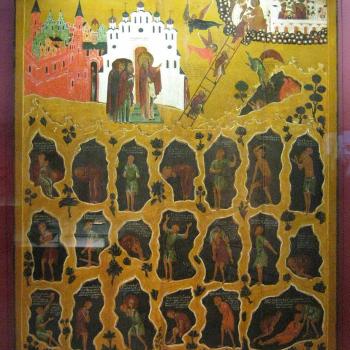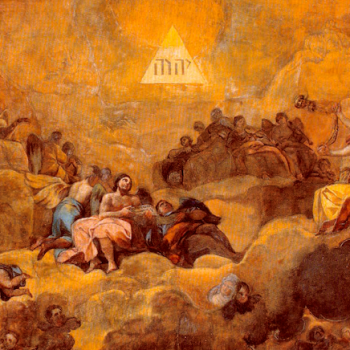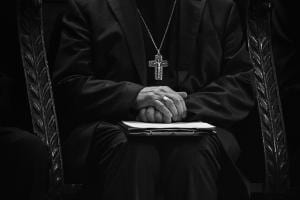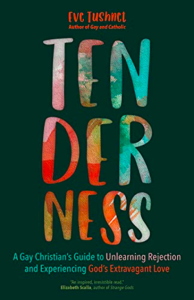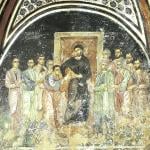Getting the Facts Straight
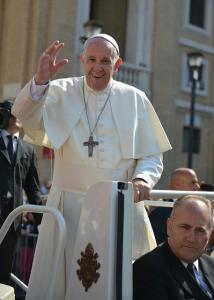
Catholic media has been abuzz for the last several days over the publication of Traditionis Custodes. This document is a motu proprio1 restricting the celebration of the Extraordinary Form of the Mass (EF), also known as the traditional Latin Mass (TLM), the pre-Vatican II Mass, the Vetus Ordo, and a few other names besides. The official translation of the document can be found here on the Vatican’s website, with an accompanying letter from Pope Francis here.
A lot of misconceptions have circulated about this document. Here are a few facts about it.
1. Does Traditionis Custodes abolish the Latin Mass?
No, for two reasons. First, while people normally mean the EF when they speak of the Latin Mass, it is perfectly licit (though rare) to celebrate the Ordinary Form in Latin; they do it at St. Matthew’s Cathedral in DC, for instance. And second, while celebration of the EF is being restricted, it is not being abolished.
2. How is the Extraordinary Form being restricted?
When Pope Benedict XVI relaxed the guidelines on celebrating the EF in 2007, the new rules allowed priests to celebrate the old rite for groups of the faithful more or less at their request, without needing special permission from their bishop. Traditionis Custodes changes this in several ways:
- The bishop’s explicit permission is now required to celebrate the EF (both for priests who wish to begin celebrating it, and for those who wish to continue)
- The bishop must determine that the groups who request the EF acknowledge the Second Vatican Council and the authority of the Pope
- Designated days and locations for the EF must be established, and a designated EF priest must be appointed to shepherd EF groups
- New EF groups are not to be authorized
There are some details that I don’t fully understand; for example, Art. 1§3 says that the readings are to be in the vernacular, and I don’t know whether that means that the vernacular readings must replace the Latin ones or simply be included in addition to the Latin. (The latter is the way I’ve generally seen things done, but I haven’t been to nearly as many EF liturgies as some of my peers.)

3. Wait, so who can still celebrate the EF?
Any priest who has his bishop’s permission, for one. For another, the document states that groups like the Fraternal Society of St. Peter (FSSP) and the Institute of Christ the King, Sovereign Priest (ICKSP), part of whose ministry is the celebration of the old rite, fall under the authority of the Congregation for Institutes of Consecrated Life. I gather this means there will be no change to their liturgies—along the lines of the Dominican Rite.
4. Is this a first step to complete suppression of the EF?
The accompanying letter states that “those who are rooted in the previous form of celebration … need to return in due time to the Roman Rite promulgated by Saints Paul VI and John Paul II”. That could mean that the long-term plan, or at least expectation, is that the EF will eventually be suppressed, at least outside of groups like the FSSP.2 If it does—well, I’d certainly be disappointed about that, and I would grieve with my brothers and sisters to whom the EF is deeply precious. I might even go as far as to call it an unnecessary and possibly imprudent decision. But I would also acknowledge that it is entirely the Holy Father’s right to make decisions of this kind about the Mass; that he enjoys a perspective on the whole Church which I do not (I am in no position to glean information from all the Catholic bishops in the world, for instance); and that communion with Peter supersedes all liturgical preferences, even those we hold for very good reasons.
5. What does this mean for other liturgies?
Long-time followers of the blog may know that while I’m not a regular EF-goer, I am a member of the Personal Ordinariate of the Chair of Peter, and our liturgy is (what used to be) called the “Anglican Use of the Roman Rite”; it’s based largely on the Book of Common Prayer (which was in turn based on the Sarum Use of the pre-Tridentine Roman liturgy). Since Art. 1 states explicitly that “The liturgical books promulgated by St. Paul VI and St. John Paul II … are the unique expression of the lex orandi3 of the Roman Rite,” a few people have expressed concern that this could mean the Ordinariate liturgy could be “next.”

Coat of arms of the Ordinariate of the Chair of St. Peter (source)
I don’t think so. It is probably worth pointing out that the Roman Rite has been reformed several times before now (notably by St. Pius V in the sixteenth century and by St. Gregory the Great in the seventh), and as far as I know, the current situation—an older form of the rite continuing alongside the newer form—is unprecedented. In this way, the EF isn’t really analogous to other Catholic liturgies like the Byzantine4 or the Maronite, or even in that sense the Anglican Use, which come from different cultures rather than from different periods.
6. But what problem is this even supposed to be addressing? Why can’t people just have the EF?
Well …
Where Thieves Break In And Steal
The last several years have seen a swelling chorus of criticism of Pope Francis. A great deal of this criticism has been more and more transparently bad faith—as when Cardinal Burke tried lamely to insist that His Holiness’ revision of the Catechism on the death penalty was “Pope Francis speaking as a man,” rather than exercising his magisterial office, when it is painfully obvious that a Pope altering the text of the Catechism is almost as magisterially official as it gets. Some of it has involved serious distortions of Catholic doctrine, as in the case of the increasingly notorious and disobedient Fr. James Altman. Some of it has been slanderous, as when Archbishop Viganò tried to smear His Holiness with his own missteps as nuncio. Some of it has been downright unhinged, as when Dr. Taylor Marshall said we should listen to demons. And some of it has crossed the line into actual sacrilege, as when Alexander Tschugguel broke into a church, stole a statue of the Mother of God, and threw it into the Tiber.
Unfortunately, these attempts to undermine the Pope’s authority and trash him in Catholic media are closely linked to some traditionalist groups. These range from Cardinal Burke’s ties to the ICKSP, which I vaguely gather is temperately trad, to Tschugguel’s membership in TFP (“Tradition, Family, Property”). Besides their liturgical preferences, TFP is a fanatical anti-Communist group; founded by Plinio Corrêa de Oliveira, a Brazilian anti-Semite who hated the Second Vatican Council, TFP actively collaborated with fascist governments in Brazil, Argentina, and Chile, including Pinochet’s notorious military dictatorship. In the late seventies, a certain Fr. Vicente actually had to flee Uruguay after TFP threatened him for preaching against the murder of three Pallottine priests and two seminarians; fortunately, Fr. Vicente had help from the local Jesuit provincial at the time—one Fr. Jorge Bergoglio, S.J.
So It’s Your Fault
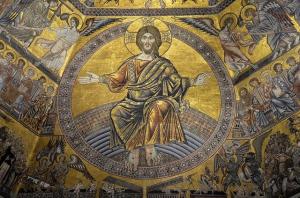
Obviously there are plenty of trads who aren’t like that in the least. It is worth saying that, judging from what few responses I’ve seen from bishops, currently established EF communities aren’t going anywhere. And obviously there are not only dull, unattractive celebrations of the newer rite, but liturgical abuses of it.
But even the vilest clown Masses of the ’70s and ’80s, to the best of my knowledge, didn’t foster actual murderers. Moreover, clowns really do seem to be behind us; whereas traditionalist dissidents seem to be becoming more numerous, more vocal, and more insolent. Contempt for the Novus Ordo seems rife, and increasingly so, alongside attacks not only on the character of Pope Francis, but on the Petrine office as such. The hoped-for détente with the SSPX and other splinter groups doesn’t seem to have materialized, but they appear to have made real inroads among otherwise faithful Catholics through the permissions of Summorum Pontificum.
Nor are all of the responses from EF enthusiasts encouraging. Rorate Cæli tweeted to the Pope, “We’d like to tell you to your face what we think of you: a petty, vindictive man with an ugly soul, a dockside bully … surrounded by sycophants”, and Church Militant published a picture of what appeared to be the Syro-Malabar Rite of India (a very ancient liturgy) with a derisive remark about His Holiness allowing the “Hindu Rite Mass.”
Talk like this makes me think that maybe Traditionis Custodes wasn’t issued a moment too soon. Acknowledging the validity of an ecumenical council and the authority of the Pope are not a high bar to clear, but a lot of responses to the motu proprio suggest that some trad groups will have a hard time clearing it. This really does seem like a problem that, while it does not overwhelm the EF community as a whole, is a serious and widespread issue within it.
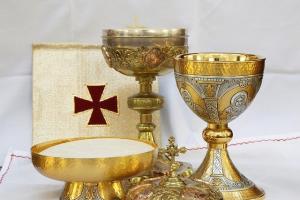
But Why?
Hard to say for certain. I think it comes from a form of idolatry: after all, anything that isn’t God, even the Mass, can be made an idol. Replacing the end with the means is a very common habit among humans. Chris Damian, a regular EF-goer, analyzes the issue very well:
Many are, as I was, drawn to the TLM out of a desire to connect deeply with the history and traditions of the Catholic Church. … On the one hand, the desire to live one’s faith as deeply as possible is good. On the other hand, this desire often brings with it a number of vicious tendencies, including the tendency towards pride, objectification, and ritualism-turned-into-ideology. I was drawn to the TLM at a point in my life when I wanted the “most intense” version of Catholicism, and then I looked down on non-TLM Catholics as “less serious” …
Unfortunately, I’ve found that TLM and Latin-focused parishes can often (even if not always) function as toxic cults of extremism and partisan ideology. The problems are well-known. For many TLM Catholics, attendance is a litmus test. And the test indicates whether one votes Republican, prioritizes “doctrine” over “pastoral concerns,” and “takes faith seriously” … We’ve often looked down on contemporary hymnody with bitter condescension. As a gay man, I take a TLM parish to be one where I am more likely to be referred to conversion therapy, and where I would be marginalized for using the word “gay.” … These latter features contribute significantly to my current inability to attend a TLM parish.
Mourning With Those Who Mourn
All that said. It is perfectly true that many, perhaps most, of the people who attend the Extraordinary Form are normal Catholics, loyal to the Pope, deeply but not idolatrously attached to the older rite; I’m sure they’re really discouraged and hurt right now. Though Traditionis Custodes has not abolished the EF, it has seriously restricted it, and certainly suggested that the time is coming when it will no longer be celebrated (or will be celebrated only by specific societies and institutes). As I’ve said, I quite like the EF myself, and would be sorry to see it disappear; and there are people for whom the EF is a much more accessible form of the liturgy than the Ordinary Form is, whose needs in my opinion have not been adequately considered by most bishops.
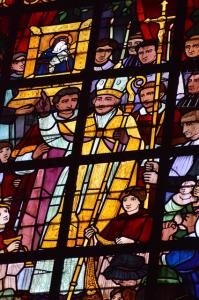
I’d like to close with a quote from a friend of mine, a fellow gay Catholic (who asked to remain anonymous). It may seem like vindictive sarcasm to some trads; but I don’t believe that it is, and I’m not sharing it in that spirit.
I sympathize with the pain of Traditionalist-minded Catholics, because I know what’s like when Church leadership:
– Views your community with automatic suspicion and hostility
– Judges your community by its most dysfunctional members
– Is willing to sacrifice your spiritual and emotional health to maintain the status quo
– Attacks you while insisting that it’s for your own good
– Sees your community as a threat rather than as the storehouse of treasures you know it to be
Oremus pro invicem.
1A motu proprio is a disciplinary directive, issued by the Pope on his own initiative (as opposed to, e.g., a doctrinal definition or the decision of a council); Summorum Pontificum, which Traditionis Custodes partly reverses, was also a motu proprio. One of the special things about a motu proprio, which sets it apart from most other documents, is that—while reasons for the decision may also be provided, as they were in this case—the validity of the decision stands even if the reasons for it are later disputed or found to be flawed.
2There are a few other interpretations, depending partly on the parts of the sentence I skipped for brevity.
3This is an abbreviated allusion to an old Latin saying, lex orandi lex credendi, which means “the rule of prayer is the rule of faith.”
4Speaking of the Byzantine Rite, the Divine Liturgy of St. Chrysostom is actually only one part of their worship; two other forms, the Liturgy of St. James and the Liturgy of St. Basil, are also used on set days of the liturgical year. Taking a cue from the East, I’ve long felt that an elegant solution would be to use the Extraordinary Form on solemnities, while using the Mass of St. Paul VI at other times. But this, I am certain, would please absolutely nobody.






